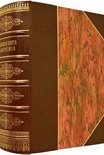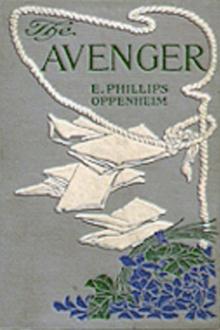Hitler's Terror Weapons, Brooks, Geoffrey [cat reading book .txt] 📗

Book online «Hitler's Terror Weapons, Brooks, Geoffrey [cat reading book .txt] 📗». Author Brooks, Geoffrey
by the same author
Hitler’s Nuclear Weapons
(Leo Cooper, 1992)
Hirschfeld– The Story of a U-boat NCO 1935–1945
(Leo Cooper, 1997)
FIPS – Legendary U-Boat Commander, 1915–1918
(as translator – Leo Cooper, 1999)
First published in Great Britain in 2002 by
LEO COOPER
an imprint of Pen & Sword Books
47 Church Street,
Barnsley, South Yorkshire S70 2AS
Copyright © 2002 Geoffrey Brooks
ISBN 0 85052 896 8
eISBN 978 1 78337 933 0
A CIP record for this book is available from the British Library
Typeset in 10/12pt Times by Phoenix Typesetting, Ilkley, West Yorkshire
Printed in England by
CPI UK
Dedication
Idedicate this book to the memory of Lt Charles Taylor USN, Senior Qualified Flight Instructor, Squadron 79M, Fort Lauderdale who, together with the thirteen men of TBM Avenger overwater navigational training flight 19, died on the evening of 5 December 1945 as the result of entering an anomalous gravity field near Great Stirrup Cay, Bahamas at about 3:15 that afternoon.
Contents
Acknowledgements
Introduction
1 Vergeltungswaffen: V-1 to V-4
2 The Aryan Physics Doctrine
3 Heisenberg’s Pioneering Paper
4 Plutonium, Paraffin and Moderators
5 The Open Road to the Atom Bomb
6 Uraniumbombe: The German Post Office Takes Over
7 V-4: The Doomsday Bomb
8 The Decision not to Drop the German Bomb
9 Brighter than a Thousand Suns - for Two Seconds
10 The Sands of Time Run Out
11 The First and Last Voyage of the German Submarine U-234
12 “In the Interests of National Defense or Foreign Policy…”
13 The Manhattan Project
14 Gravity II
15 The “Foo Fighter”
16 German Flying Crescents and Discs
17 The Vril Reich
Appendix
Notes
Acknowledgements
I acknowledge a debt of gratitude to nuclear physicists Pat Flannen, whose speculation about Heisenberg’s experiments at Leipzig inspired this book initially, and Norberto Lahuerta, for his unstinting help with research and scientific opinion into all aspects of both V-4 projects.
I add a special note of appreciation to Brigadier Wilson, Barbara Bramall and Tom Hartman for their help and patience in coping with many late but unavoidable additions and deletions, and to Pen & Sword for having the courage to publish a book of this kind.
Introduction
Following the landings in France in 1944, the Combined Chiefs of Staff set up a number of military-civilian teams, termed the Joint Intelligence Objectives Committee, to follow the invading Allied armies into Germany with a view to seizing all Hitler’s military, scientific and industrial secrets for early use against Japan. The teams worked against the clock to obtain the most vital information before it was destroyed. The result was the biggest collect of captured enemy war secrets ever assembled. One Washington official called it “the greatest single source of this type of material in the world, the first orderly exploitation of an entire country’s brain-power”. The Office of Technical Services, the Washington government agency originally formed to handle the collection, reported that tens of thousands of tons of material was involved. It was estimated that over a million separate items had to be handled and they most likely represented practically all the scientific, military and industrial secrets of Nazi Germany. In A Brief History of Air Force Scientific and Technical Intelligence, published by NAIC, the National Air Intelligence Centre, it was recorded that in 1946 at Wright Field alone, three hundred people processed over 1500 tons of documents, adding 10,000 new technical terms to the English language. The technical knowledge from these documents revolutionized American industry.
In the summer of 1944, at about the time the JIOC was set in motion, the German High Command began to contemplate the eventuality of defeat and in September that year a General Plan was elaborated to evacuate Nazis, Third Reich capital and highly advanced technical and scientific knowledge to places selected by Hitler himself, of which Argentina was the principal destination. The strategist of the General Plan was Hitler’s personal ADC, Martin Bormann. The so-called “Rat Run” to Argentina was operated through the consulates of that country in Italy and Rome and facilitated the escape of wanted war criminals. But the Rat Run, known to the Germans under the codename Regentroepfchen (raindrop), was a fronting operation concealing a much vaster programme aimed at retaining for Nazism in exile its financial wealth, the scientific, political and military elite of the Third Reich and certain hyper-secret specialized knowledge. This latter was of a level above and beyond the million or so secret inventions and patents to be abandoned to the Allies. Code-named Aktion Wiking, this section of the overall plan was begun in September 1944 by Maximilian Erth with the assistance of Philip Bouhler (head of Hitler’s private office) and the Gauleiter of Lower Silesia, Karl Hanke.
The Nazis were particularly anxious to protect documents containing the highest classifications of secret knowledge designated Geheime Reichssache relating to the development of arms, aircraft and submarines. The most important of all these, files relating to a super aviation fuel and advanced aircraft, went by long-range Junkers Ju 390 transport aircraft directly to Argentina.
From the point of view of the US Government, the 260 tons of strategic material aboard the German U-boat U-234 escorted into Portsmouth Navy Yard, New Hampshire, on 19 May 1945 is so absurdly secret that the fact that it is classified as top secret is a secret, as are the documents pertaining to Dr Heinz Schlicke and the nature of the assistance he afforded the Manhattan Project in the three months after his capture. The most secret item of cargo aboard U-234 remains the eighty small cases of uranium powder which have never appeared on any USN Unloading Manifest and which will have been the fissile material for a rudimentary atomic explosive. But as far as the German High command was concerned, the voyage of this U-boat with its extraordinary cargo of war materials and passengers did not rate so highly as to fall within the ambit of the General Plan of Evacuation.
In the 1950s two crewmen of the former pocket battleship Admiral Graf Spee Rudolf Walter Dettelmann and Alfred Schultz, interned in Argentina, swore





Comments (0)